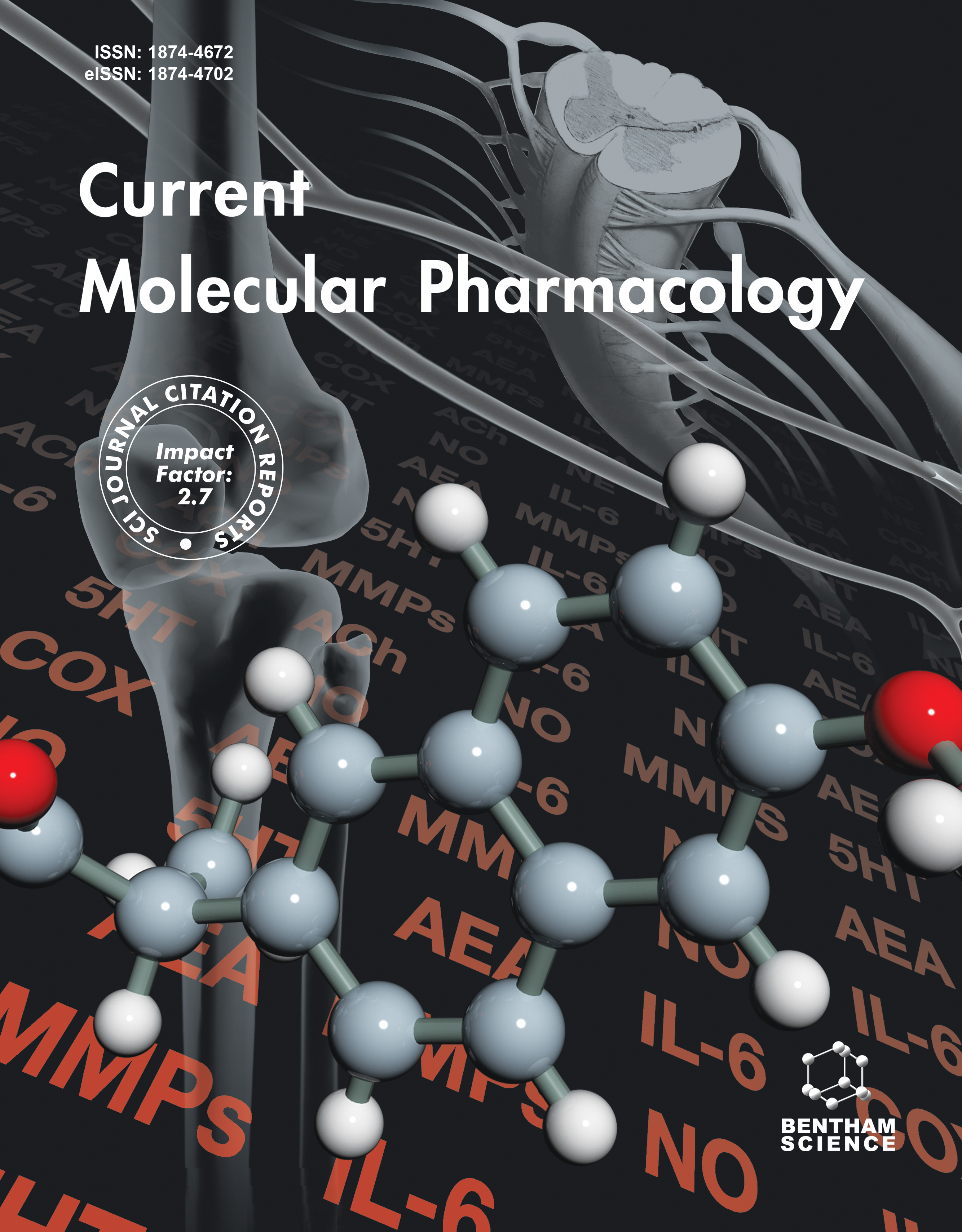- Home
- A-Z Publications
- Current Molecular Pharmacology
- Previous Issues
- Volume 11, Issue 4, 2018
Current Molecular Pharmacology - Volume 11, Issue 4, 2018
Volume 11, Issue 4, 2018
-
-
Sepsis: The Involvement of Platelets and the Current Treatments
More LessAuthors: Ana C. A. Naime, Jessica Oliveira Frade Ganaes and Maria E. Lopes-PiresObjective: Sepsis, a serious and life threatening complication arising from infection caused by lipopolysaccharide, is a complex inflammatory syndrome, and one of the main causes of death in intensive care units (ICU). It is characterized as an over-response of pro-coagulant agents promotes coagulopathy and thrombus formation, resulting in disseminated intravascular coagulation (DIC). Furthermore, it can cause m Read More
-
-
-
Tools in the Design of Therapeutic Drugs for CNS Disorders: An up-to-date Review
More LessAuthors: Jagdish K. Sahu and Arun Kumar MishraBackground: The brain is a vital part of the central nervous system (CNS), characterized by the presence of soft tissue in its internal structure which protects itself. Research on design of drugs for CNS disorders is in progress and up to date information is required for further investigation. Objective: The present paper is written with the objective to compile all the available data and information on CNS disorders and CNS ac Read More
-
-
-
Impact of Sphingolipid Mediators on the Determination of Cochlear Survival in Ototoxicity
More LessAuthors: Keiji Tabuchi and Akira HaraBackground and Objective: Sphingolipid metabolites, including ceramide, sphingosine, and their phosphorylates (ceramide-1-phosphonate [C1P] and sphingosine-1-phosphate [S1P]), regulate diverse cellular processes including apoptosis, the cell cycle, and cellular differentiation. Recent studies have shown that these sphingolipid metabolites are generated in response to ototoxic agents and play important roles in determ Read More
-
-
-
Radiation Protection and Mitigation by Natural Antioxidants and Flavonoids: Implications to Radiotherapy and Radiation Disasters
More LessBackground: Nowadays, ionizing radiations are used for various medical and terroristic aims. These purposes involve exposure to ionizing radiations. Hence, people are at risk for acute or late effects. Annually, millions of cancer patients undergo radiotherapy during their course of treatment. Also, some radiological or nuclear events in recent years pose a threat to people, hence the need for radiation mitigation str Read More
-
-
-
Phagocytosis and Motility in Human Neutrophils is Competent but Compromised by Pharmacological Inhibition of Ezrin Phosphorylation
More LessAuthors: Rhiannon E. Roberts, Geetha L. Elumalai and Maurice B. HallettBackground and Objective: Ezrin links the cortical cytoskeleton to the plasma membrane and plays a role in regulating changes in cell shape. Recently, NSC668394 has been shown to inhibit a key step for its activity, i.e. phosphorylation at threonine 567. In neutrophils, another key regulatory step is the Ca2+-mediated cleavage of ezrin by calpain. Methods: In this paper, we use NSC668394 as a pharmacological inhi Read More
-
-
-
Anticancer Mechanism of Lobaplatin as Monotherapy and in Combination with Paclitaxel in Human Gastric Cancer
More LessAuthors: Suhang Hua, Xiangyu Kong, Binbin Chen, Wenxin Zhuang, Qian Sun, Wei Yang, Wenzhi Liu and Yongxing ZhangObjective: To explore the mechanism by which lobaplatin, as monotherapy and in combination with paclitaxel, inhibits the proliferation of human gastric cancer SGC-7901 cells. Methods: After treatment, the MTT assay was used to assess cell viability; cell cycle distribution was evaluated flow-cytometrically. Western blot was used to quantitate cyclin D1, E1, B1, and Cdk2/4 protein levels. Results: Lobaplatin and paclitaxel inhibit Read More
-
-
-
The Effect of Melatonin on Superoxide Dismutase and Glutathione Peroxidase Activity, and Malondialdehyde Levels in the Targeted and the non-targeted Lung and Heart Tissues after Irradiation in Xenograft Mice Colon Cancer
More LessPurpose: Radiation causes damage to irradiated tissues and also tissues that do not receive direct irradiation through a phenomenon called bystander effects. Melatonin as a potent antioxidant and anti-inflammatory agent is known for protection of normal tissues against ionizing irradiation. In addition, some studies have suggested that Melatonin may have some anti-cancer properties. Although the complete mec Read More
-
-
-
The Role of SAPK/JNK Pathway in the Synergistic Effects of Metformin and Dacarbazine on Apoptosis in Raji and Ramos Lymphoma Cells
More LessAuthors: Maryam Naserian, Elham Ramazani, Mehrdad Iranshahi and Zahra Tayarani-NajaranBackground: Besides the first-line medication for the treatment of type 2 diabetes, the growth inhibitory activity of metformin alone or in combination with conventional chemotherapeutics has been addressed on a panel of cell lines. In this study, we investigated the cytotoxicity and apoptosis of the metformin alone and in combination with dacarbazine in Raji and Ramos lymphoma cell lines. Methods: Cell viability an Read More
-
Most Read This Month
Article
content/journals/cmp
Journal
10
5
false
en


